
Seymour is a city in Jackson County, Indiana, United States. Its population was 21,569 at the 2020 census.

The Great Train Robbery was the robbery of £2.61 million, from a Royal Mail train heading from Glasgow to London on the West Coast Main Line in the early hours of 8 August 1963 at Bridego Railway Bridge, Ledburn, near Mentmore in Buckinghamshire, England.
Train robbery is a type of robbery, in which the goal is to steal money or other valuables being carried by trains.

Emmett Dalton was an American outlaw, train robber and member of the Dalton Gang in the American Old West. Part of a gang that attempted to rob two banks in Coffeyville, Kansas, on October 5, 1892, he was the only member of five to survive, despite receiving 23 gunshot wounds. Two of his brothers were killed. After serving 14 years in prison for the crime, Dalton was pardoned. He later capitalized on his notoriety, both as a writer and as an actor. His 1918 serial story Beyond the Law was adapted as a like-named silent film in which he played himself. His 1931 book When the Daltons Rode was adapted after his death as a 1940 film of the same name.

The Dalton Gang was a group of outlaws in the American Old West during 1890–1892. It was also known as The Dalton Brothers because four of its members were brothers. The gang specialized in bank and train robberies. During an attempted double bank robbery in Coffeyville, Kansas in 1892, two of the brothers and two other gang members were killed; Emmett Dalton survived, was captured, and later pleaded guilty to second-degree murder, although he later asserted that he never fired a shot during the robbery. He was paroled after serving 14 years in prison.
The Tenth Avenue Gang was a New York City street gang and later became the city's first train robbers.

Thomas Edward Ketchum was an American cowboy who later became an outlaw. He was executed in 1901 for attempted train robbery. The execution by hanging was botched; he was decapitated because the executioner used a rope that was too long.

Colorado Territory is a 1949 American Western film noir directed by Raoul Walsh and starring Joel McCrea, Virginia Mayo, and Dorothy Malone. Written by Edmund H. North and John Twist, and based on the novel High Sierra by W.R. Burnett, the film is about an outlaw who is sprung from jail to help pull one last railroad job.
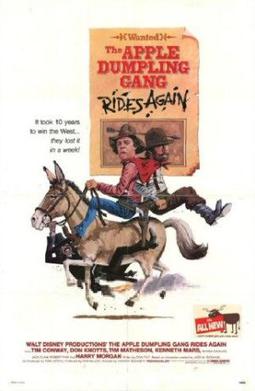
The Apple Dumpling Gang Rides Again is a 1979 American comedy-Western film directed by Vincent McEveety. Produced by Walt Disney Productions, it is a sequel to The Apple Dumpling Gang (1975), starring the comedy duo of Tim Conway and Don Knotts reprising their respective roles as Amos and Theodore. The film also stars Tim Matheson, Harry Morgan, and Kenneth Mars.
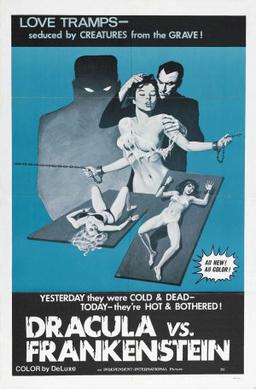
Dracula vs. Frankenstein, released in the UK as Blood of Frankenstein, is a 1971 American science fiction horror film directed and co-produced by Al Adamson. The film stars J. Carrol Naish as Dr. Durea, a descendant of Dr. Frankenstein who is working on a blood serum for his assistant Groton. The serum soon becomes sought after by Count Dracula, who hopes that it will grant him the ability to be exposed to sunlight without harm. Other members of the film's cast include Anthony Eisley, Regina Carrol, and Angelo Rossitto.

Denver and Rio Grande is a 1952 American Technicolor Western film, directed by Byron Haskin and released by Paramount Pictures. The film is a dramatization of the building of the Denver and Rio Grande Railroad, which was chartered in 1870. It was filmed in the summer of 1951 on location on actual D&RG track near Durango, Colorado.
The Reno Gang, also known as the Reno Brothers Gang and The Jackson Thieves, were a group of criminals that operated in the Midwestern United States during and just after the American Civil War. Though short-lived, the gang carried out the first three peacetime train robberies in U.S. history. Most of the stolen money was never recovered.

Meedy White Shields was an American pioneer and politician in the state of Indiana, who was successful in various business ventures and founded the city of Seymour. He was a nephew of John Shields of Lewis and Clark fame, a first cousin to General John Tipton and a distant cousin of the diarist Robert Shields.
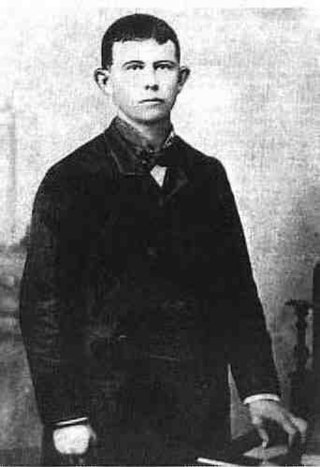
Gratton Hanley "Grat" Dalton was an American outlaw in the American Old West. He was one of three brothers in the Dalton Gang, led by his younger brother Bob Dalton. Both brothers were killed during a shootout in an ill-fated raid on two banks in Coffeyville, Kansas. Their brother Emmett Dalton survived to be convicted and imprisoned for fourteen years.
The Newton Gang was an outlaw gang of the early 20th century, who engaged in train robbery and bank robbery. From 1919 through 1924 the gang robbed dozens of banks, claiming a total of seventy-five banks and six trains. According to Willis Newton, the brothers "took in more money than the Dalton Gang, Butch Cassidy's Wild Bunch and the James-Younger Gang combined." According to their own claims, they never killed anyone although it has been reported that "they did on occasion shoot, pistol-whip and beat their victims"
The Little Train Robbery is a 1905 American silent Western film. It is a parodic sequel/remake to Porter's 1903 film The Great Train Robbery with an all-child "cast as the robbers, and a miniature railroad and playhouse as sets."

Robert Rennick Dalton was an American outlaw in the American Old West. Beginning in 1891, he led the Dalton Gang, whose varying members included three of his brothers. They were known for robbing banks, stagecoaches and trains, primarily in Kansas and Oklahoma Territory, quickly attracting pursuit by lawmen.
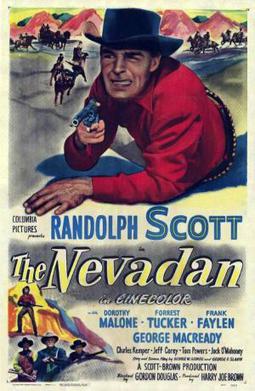
The Nevadan is a 1950 American Western film directed by Gordon Douglas and starring Randolph Scott, Dorothy Malone, Forrest Tucker, Frank Faylen, and George Macready. Written by George W. George and George F. Slavin, the film is about a mysterious stranger who crosses paths with an outlaw bank robber and a greedy rancher. The Nevadan was filmed in Lone Pine, California.

The Legend of the Reno Brothers is a 2013 American Western documentary film by Hangman's Crossing Productions starring Morgan Rague. The world's first three peacetime train robberies were carried out by Frank and John Reno in Seymour, Indiana. The Reno Gang became so successful the Adams Express Company and railroad tycoons hired Allan Pinkerton to bring them to justice.
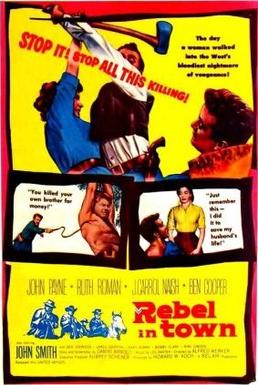
Rebel in Town is a 1956 American Western film directed by Alfred L. Werker and starring John Payne, Ruth Roman, J. Carrol Naish and Ben Cooper.
















